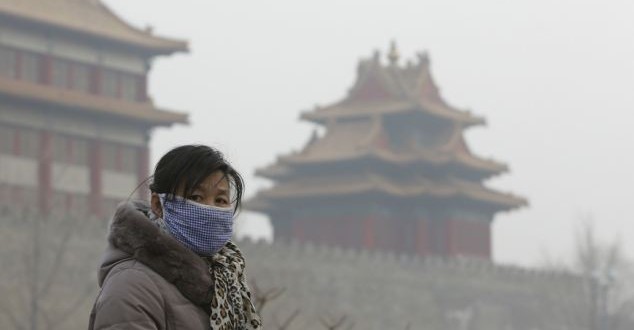Beijing remains on an “orange” pollution alert, the second-highest level, leading to the closure of highways, the suspension of construction and a warning to residents of the Chinese capital to stay indoors.
Beijing’s PM2.5 concentration – referring to particles smaller than 2.5 micrometres – reached a high of 434 micrograms per cubic metre at noon on Saturday.
That is in the highest band of the scale and is considered ‘hazardous,’ according to the US embassy’s air-quality index reading.
The daily maximum exposure to PM2.5 particles recommended by the WHO is 25 micrograms per cubic metre.
The particles pose serious health hazards because they can embed deep in the lungs.
‘It looks like a nuclear winter out there,’ said a 35-year-old business consultant in Beijing.
‘I plan to stay in one room all weekend catching up on reading, with two air purifiers on at full blast.’
In recent weeks, pollution readings of 200 to 300 have been common in the capital, despite commitments from the government to improve the environment.
Beijing and many other northern cities in China are notorious for their winter smog, which is caused by a combination of air pollution and weather conditions.
The US embassy in Beijing recorded a PM2.5 peak of 900 micrograms in January 2013.
The prolonged bout of record pollution that year prompted China to pursue more anti-pollution measures.
The Ministry of Environmental Protection has forecast severe pollution for Beijing and other areas of northern China until Tuesday, when strong winds are expected to clear some pollutants.
Agencies/Canadajournal
 Canada Journal – News of the World Articles and videos to bring you the biggest Canadian news stories from across the country every day
Canada Journal – News of the World Articles and videos to bring you the biggest Canadian news stories from across the country every day



